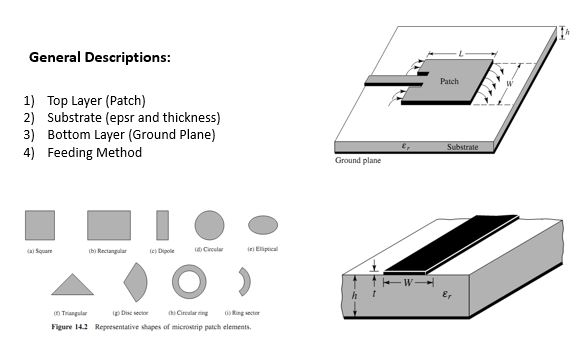In new technology like in mobile phone, car, satellite, and electronics applications, where weight, size, cost, performance, ease of installation, and ergonomic profile are constraints, low-profile antennas may be required. Presently there are many other gadgets and commercial applications, such as mobile radio and wireless communications, that have similar specifications. To meet these requirements, microstrip antennas can be used. These antennas are low profile, conformable to planar and nonplanar surfaces, simple and inexpensive to manufacture using modern printed-circuit technology, mechanically robust when mounted on rigid surfaces, compatible with MMIC designs, and when the particular patch shape and mode are selected, they are very versatile in terms of resonant frequency, polarization, pattern, and impedance. Often microstrip antennas are also referred to as patch antennas. The radiating elements and the feed lines are usually photoetched on the dielectric substrate. The radiating patch may be square, rectangular, thin strip (dipole), circular, elliptical, triangular, or any other configuration.

Basic characteristics of Microstrip Antenna

Leave a Reply